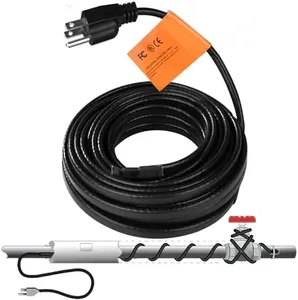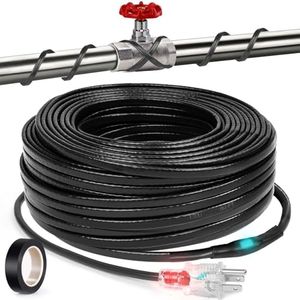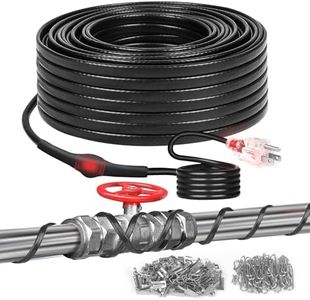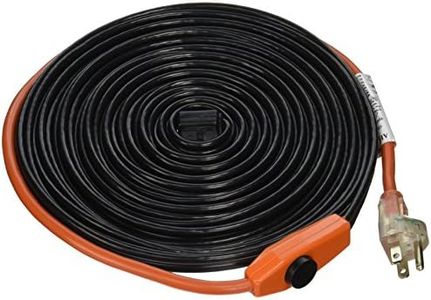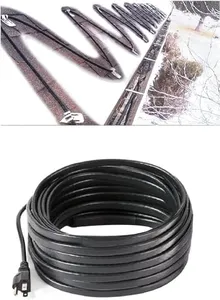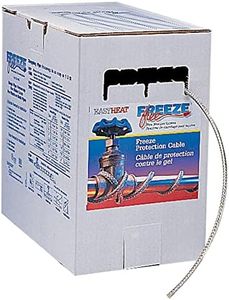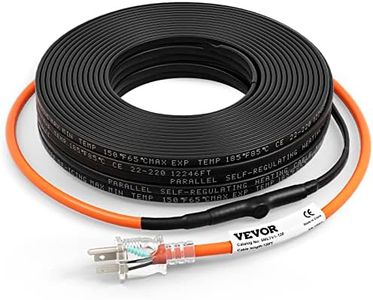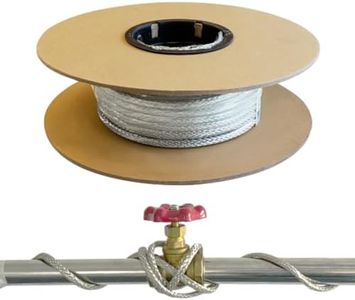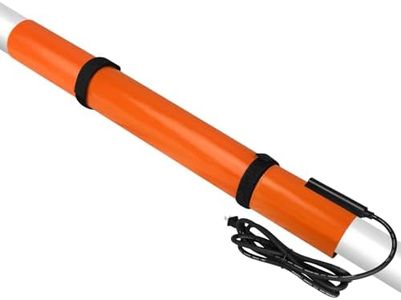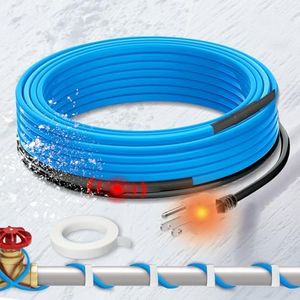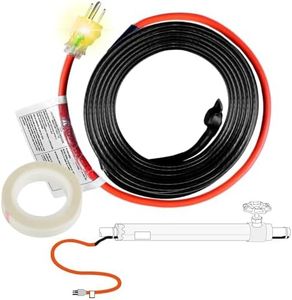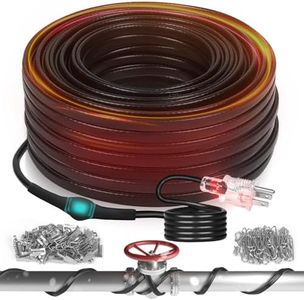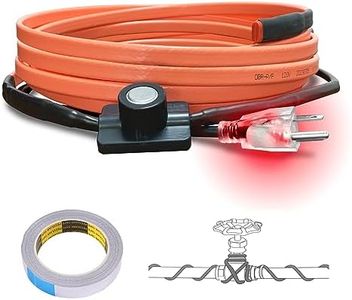We Use CookiesWe use cookies to enhance the security, performance,
functionality and for analytical and promotional activities. By continuing to browse this site you
are agreeing to our privacy policy
10 Best Pipe Heating Cables 2025 in the United States
How do we rank products for you?
Our technology thoroughly searches through the online shopping world, reviewing hundreds of sites. We then process and analyze this information, updating in real-time to bring you the latest top-rated products. This way, you always get the best and most current options available.

Buying Guide for the Best Pipe Heating Cables
When it comes to selecting pipe-heating cables, it's essential to understand that these devices are designed to prevent pipes from freezing in cold weather. They work by providing a controlled amount of heat to the pipes, ensuring that the water inside remains at a temperature above freezing. Choosing the right pipe-heating cable involves considering several key specifications to ensure it meets your needs effectively. Here are the main factors to consider:Cable LengthCable length is the total length of the heating cable. This is important because it needs to cover the entire length of the pipe you want to protect. Measure the length of your pipe and choose a cable that matches or slightly exceeds this length. For longer pipes, you may need multiple cables or a longer single cable. Ensure the cable length is sufficient to cover all exposed sections of the pipe.
Power OutputPower output, measured in watts per foot, indicates how much heat the cable can produce. This is crucial because it determines the effectiveness of the cable in preventing freezing. Lower power output (3-5 watts per foot) is suitable for mild climates or insulated pipes, while higher power output (6-10 watts per foot) is necessary for harsher climates or uninsulated pipes. Choose a power output that matches the severity of your local winter conditions and the insulation level of your pipes.
Self-Regulating vs. Constant WattageSelf-regulating cables adjust their heat output based on the surrounding temperature, becoming more efficient and safer as they reduce power usage when it's warmer. Constant wattage cables provide a steady amount of heat regardless of the temperature. Self-regulating cables are generally preferred for their energy efficiency and safety, especially in varying temperatures. However, constant wattage cables can be suitable for consistent, extreme cold environments. Consider your local climate and energy efficiency preferences when choosing between these types.
VoltageVoltage refers to the electrical power supply required for the cable to operate. Most residential pipe-heating cables are designed for standard household voltage (120V), but some may require higher voltage (240V) for industrial or large-scale applications. Ensure the cable you choose matches the voltage of your power supply to avoid compatibility issues. For most home applications, a 120V cable will be sufficient.
Thermostat ControlSome pipe-heating cables come with built-in thermostats that automatically turn the cable on and off based on the pipe's temperature. This feature is important for energy efficiency and preventing overheating. Cables with thermostats are ideal for users who want a set-and-forget solution, as they require less manual intervention. If you prefer more control over the heating process, you might opt for cables without thermostats and use an external controller.
Durability and Weather ResistanceDurability and weather resistance refer to the cable's ability to withstand harsh environmental conditions, such as moisture, UV exposure, and physical wear. This is important for ensuring the longevity and reliability of the cable. Look for cables with robust, weather-resistant outer jackets and high-quality construction. If your pipes are exposed to the elements, prioritize cables with higher durability ratings to ensure they last through multiple seasons.
Most Popular Categories Right Now
